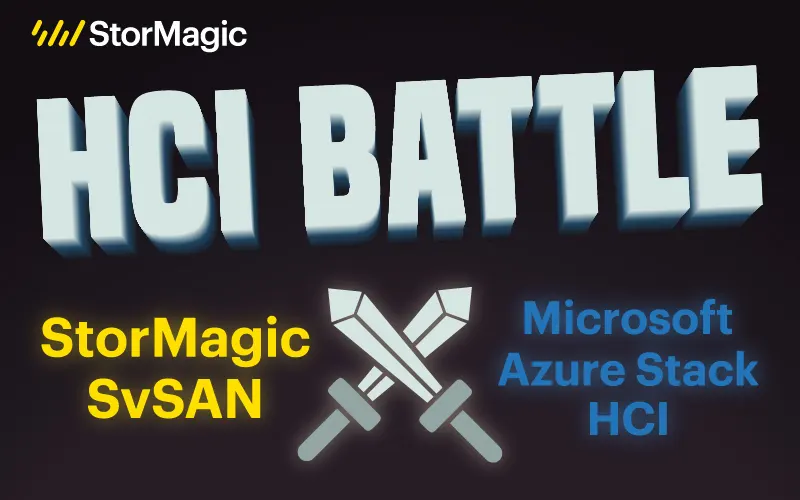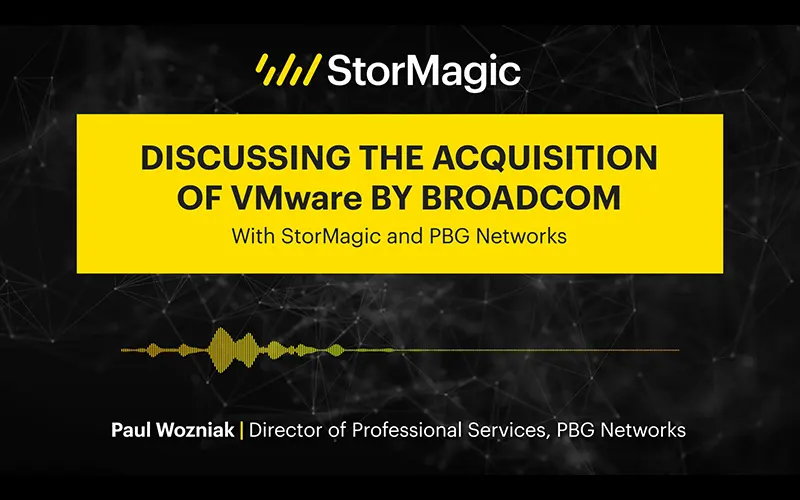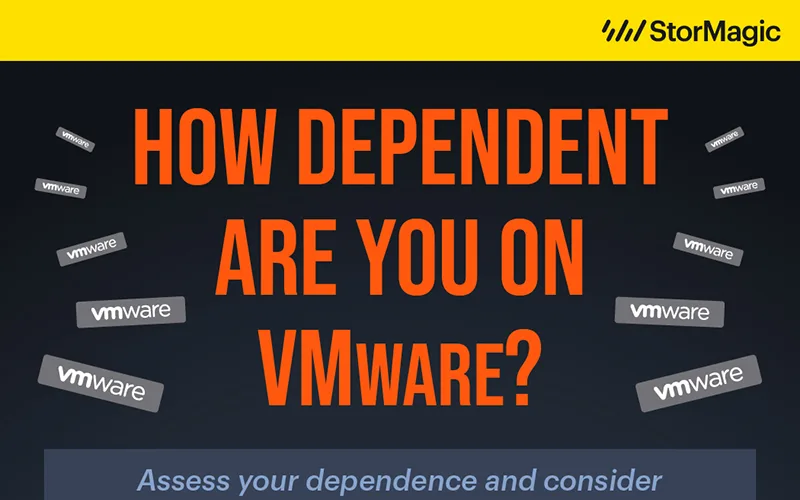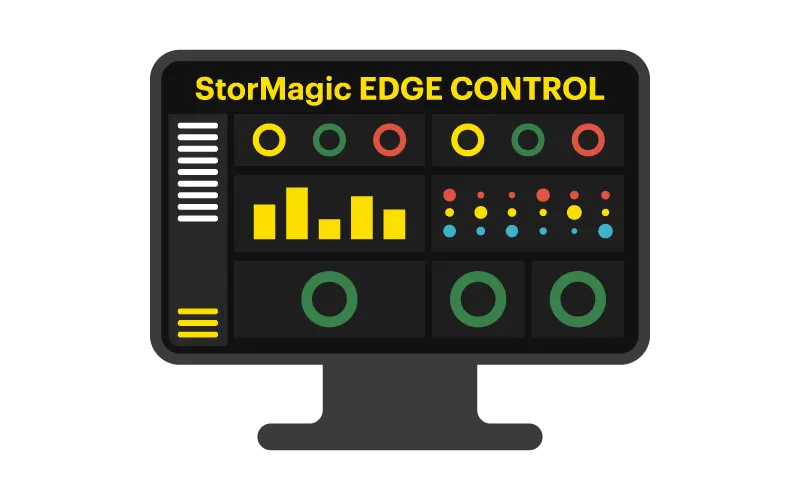In December 2020, the HCI landscape witnessed another shift with big player Microsoft stepping into the arena with their latest hyperconverged storage solution, Microsoft Azure Stack HCI. This entry garnered lots of attention, with the company promising a powerful solution that integrated tightly with their existing cloud service product, Microsoft Azure.
However, it has also marked the beginning of the company’s move away from Microsoft Storage Spaces Direct (S2D), creating a spike in costs for those organizations reliant on S2D, and who are being pushed by Microsoft to adopt Azure Stack HCI as a replacement.
While a more efficient and powerful solution for HCI deployment than S2D, one of the biggest issues with Microsoft Azure Stack HCI lies in its reliance on cloud integration. Requiring customers to purchase Azure, Microsoft’s cloud storage solution, a big concern amongst those forced to switch is the high upfront and ongoing monthly costs to store data in the cloud.
A reduction in flexibility and ease of use, which are critical factors for SMBs and those deploying across multiple edge sites, are additional issues that have emerged with Azure Stack HCI. Such organizations typically struggle with limited budgets and multiple site deployments.
For those considering Azure Stack HCI as a hyperconverged solution, join us on an exploration into the solution, and how StorMagic SvSAN’s flexible, lightweight architecture compares as an alternative.
Hardware Requirements
Microsoft Azure Stack HCI’s seamless integration of on-premise infrastructure and cloud services, positions the solution as the perfect product for organizations looking to modernize their IT infrastructure. But for those in areas of low bandwidth and connectivity, the requirement to constantly backup to the cloud can prove impractical for edge and SMB customers. An organization at the ‘edge’ will commonly have tens, hundreds or even thousands of edge locations, consequently an always-on cloud connection may require prohibitive levels of infrastructure to transfer larger volumes of data.
Azure Stack HCI’s hardware configuration requirements are high, starting at 32GB of memory, 4GB of additional memory per TB of cache drive capacity, and 10GbE of networking. Add to this its requirement to acquire new Microsoft-approved hardware from specific vendors, and it’s easy to see how those with smaller budgets can be quickly priced out.
Alternatively, SvSAN’s simple, low-cost, and flexible architecture, can run on as few as two x86 server nodes per cluster, with no requirement for them to be new or identical in make, model, or age. It has a minimum hardware requirement of only 1GB of RAM and 1GbE of networking, while also giving users the flexibility to choose their own cloud provider should they wish to utilize the cloud.
Witness: Microsoft Azure Stack HCI vs SvSAN
“Split-brain” occurs when the servers within a cluster lose contact with each other and the data on each becomes inconsistent. To prevent data corruption in such an event, it’s advised to use a witness node or witness service – something both StorMagic and Microsoft provide for their users, though each with distinct differences in their approach.
The StorMagic witness is included with every SvSAN license purchase at no extra cost, and a single witness provides quorum for up to 1,000 SvSAN clusters. It can be deployed as a virtual machine or installed on hardware as lightweight as a Raspberry Pi. Furthermore, a low-cost, cloud-based witness-as-a-service (WaaS) option is also available as a subscription. Instead of installing the witness on hardware, an organization can simply connect their SvSAN clusters to the WaaS feature provided by StorMagic and manage everything from one location, with nothing to maintain.
Microsoft Azure Stack HCI customers also have the option of using a witness. However, this service is only available for a monthly fee and manages just a single cluster per witness node. The associated monthly costs may be high and unpredictable. An alternate option, using a local file share to provide quorum, is possible, but not enterprise-grade.
Ease of Use
Modern SMBs and edge organizations operate in fast-paced environments, so they need HCI solutions that are simple to use and manage.
Azure Stack HCI’s reliance on Microsoft-approved infrastructure only, along with its many and confusing management interfaces, serves to benefit only those architecting an environment built entirely with Microsoft products. This inflexibility creates difficulties for organizations with diverse infrastructure environments, unfamiliarity with Microsoft’s products, and those with limited budgets.
Conversely, StorMagic SvSAN has been designed with ease of management in mind. Its management interface, Edge Control, is a web-based application that runs in the cloud, and can be accessed from anywhere. Edge Control allows SvSAN users to manage every VSA on one device, regardless of the hypervisor being used – whether vSphere/ESXi, Hyper-V or KVM. In addition, SvSAN has a dedicated plugin for VMware vCenter, allowing organizations with VMware environments to deploy SvSAN with a simple wizard-like interface directly within their existing management console.
StorMagic SvSAN: An Ideal Alternative to Microsoft Azure Stack HCI for SMB and Edge Customers
Navigating the complex landscape of HCI solutions, and weighing the pros and cons of each option appropriately, is crucial for selecting a solution that meets business needs without over-provisioning. While Microsoft Azure Stack HCI does bring undeniable benefits to the table, its cloud integration, its high upfront and running costs, and its strict infrastructure requirements make it an unsuitable solution for edge and SMB customers.
StorMagic SvSAN offers a competitive alternative, excelling in simplicity, affordability, and flexibility for users. To summarize:
- SvSAN’s minimum hardware requirements start at just 1GB of RAM and 1GbE of networking, compared to Azure Stack HCI’s 32GB and 10GbE
- The powerful SvSAN witness manages up to 1,000 clusters at no extra cost, whereas Azure Stack HCI’s witness has to be purchased separately and only manages one cluster per Witness
- Unlike Azure Stack HCI, SvSAN offers a simple, easy-to-use management and monitoring interface without multiple confusing options.
As always, a proper assessment of your organization’s operational requirements and IT resources should be conducted to correctly determine which solution best suits each use case.
A deeper exploration into StorMagic SvSAN and Microsoft Azure Stack HCI can be found in analyst firm DCIG’s latest comparative paper. Here you’ll find their competitive analysis of the two solutions, use case recommendations for SMBs and edge environments, insights and expert guidance for those considering either solution as a fit for their organizations, and more.




